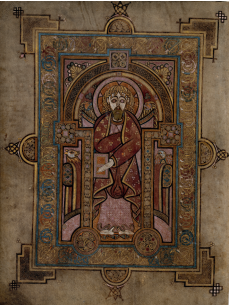BITE-SIZED HISTORY
Published in Issue 1 (January/February 2020), News, Volume 28Rebranding at Galway Museum
Fáilte Ireland, through the National Tourism Development Authority, has committed a record €6.64m to develop a new state-of-the art museum in Galway city. Rebranded as the Atlantic Museum Galway, the new three-story interactive museum will be developed at Comerford House, next to the current Galway City Museum, which stands on the left bank of the River Corrib. It will highlight the influence that the Atlantic has had on the people, cultures and traditions of this ‘Merchant City’. The square between the Spanish Arch and the existing museum will be remodelled into a new public space that will bring all elements of the attraction together. Visitors will be able to take in the vista of Galway Bay, the Claddagh and the River Corrib from a new viewing point on top of the Spanish Arch. This represents the single biggest Fáilte Ireland investment in a tourist attraction and is expected to generate €29.3m in revenue for the region in its first five years of opening. The total project cost, including funding from Galway City Council, will be €10.2m.
Caught on film
Rare photographs of IRA men patrolling the streets of West Belfast during the early days of the Troubles have been donated to a unique on-line archive. Dozens of pictures taken over several years have been handed over to the Belfast Archive Project by a former amateur photographer from West Belfast. The man, who is now aged 78, took hundreds of images as the Troubles erupted in the late 1960s and early 1970s. The images he captured on his Pentex camera include photos of armed IRA members in the Lenadoon area of West Belfast during a gun battle that marked the end of the 1972 truce. Others show the aftermath of a Loyalist attack on Catholic homes in Bombay Street in August 1969. The unnamed photographer also photographed British soldiers erecting the first ‘peace-line’ in Belfast in September 1969. His collection, along with other photographs in the Belfast Archive Project, can be seen at belfastarchiveproject.com.

Above: An illuminated page from the Book of Kells, which will be out of sight of the public until March 2020 owing to ‘necessary works’ to Trinity College’s Old Library. (Trinity College, Dublin)
Book of Kells stand-in
The Book of Kells has been removed from public display in Trinity College, Dublin, for four months as part of the first phase of redevelopment of Trinity’s Old Library. Trinity College says that the redevelopment is ‘to ensure the conservation of the eighteenth-century building and the preservation of its precious manuscripts and research collections for generations to come’. As part of the plan, the display area of the Book of Kells, which is located in the Old Library, will be undergoing ‘necessary works’, which will require the removal of the fabled manuscript book for the duration. The Book of Kells will be out of public sight until March 2020. During this period, the Book of Kells ‘Turning Darkness into Light’ exhibition will remain open to the public, with ticket prices reduced by 15%. All other areas in the Old Library will also be accessible, including the Long Room. Visitors will still get an idea of what the Book of Kells is like, as a full-colour replica will be on display in the Long Room. I wonder whether the general visitor will notice the difference?
‘Bend in the Boyne’
Archaeologists are conducting a survey of the River Boyne, believed to be the first of its kind. The team’s members come from University College Dublin’s School of Archaeology and Ulster University’s School of Geography and Environmental Science, and the survey is funded by the Royal Irish Academy. The archaeologists are concentrating on the riverbed where it runs through the Brú na Bóinne World Heritage Site as part of a project called ‘Bend in the Boyne’. So far the survey has identified 40 previously unknown monuments close to Newgrange and has identified 100 items of interest in a 10km stretch. Ten of these appear to be ‘log-boat-type anomalies’. This is not so unusual, as there have been log boats, including one that dated from the Neolithic era, found in the Boyne before. There are also sixteen items that appear to be large boulders. It is speculated that they were destined for use in the construction of the monument at Newgrange. Among the other finds are weirs, accumulations of debris that could be of archaeological importance, and some 31 very modern tyres! The research findings are part of a temporary exhibition housed in the newly redeveloped OPW Brú na Bóinne visitor centre.
Oireachtas 1919–2019 goes on-line
The Oireachtas Library and Research Service recently launched an on-line Bibliography of Parliament 1919–2019. The bibliography aims to be an authoritative but not exhaustive list of works relevant to the first 100 years of parliamentary self-government in Ireland. It was commissioned as part of the Houses of the Oireachtas Centenary Programme to commemorate the centenary of the First Dáil. It was compiled in partnership with the Department of Politics and Public Administration at the University of Limerick. Subjects covered in the on-line archive include the administration and role of the Oireachtas, parliamentary business and parliamentary reform, as well as elections and members of the Oireachtas. The bibliography can be accessed on the Houses of the Oireachtas website, https://www.oireachtas.ie/en/visit-and-learn/bibliography/, via Zotero.org. By registering for a free account and joining the group, visitors can download or export items to guide further reading.
















